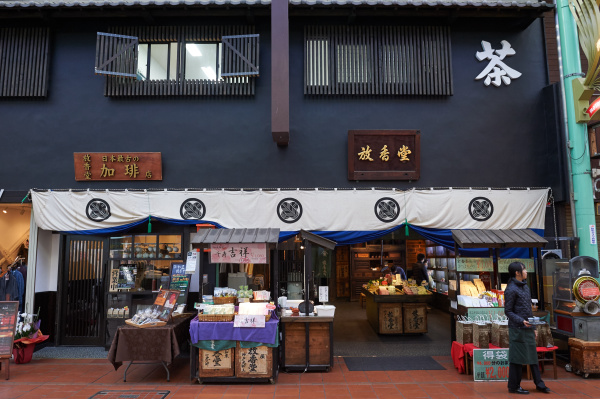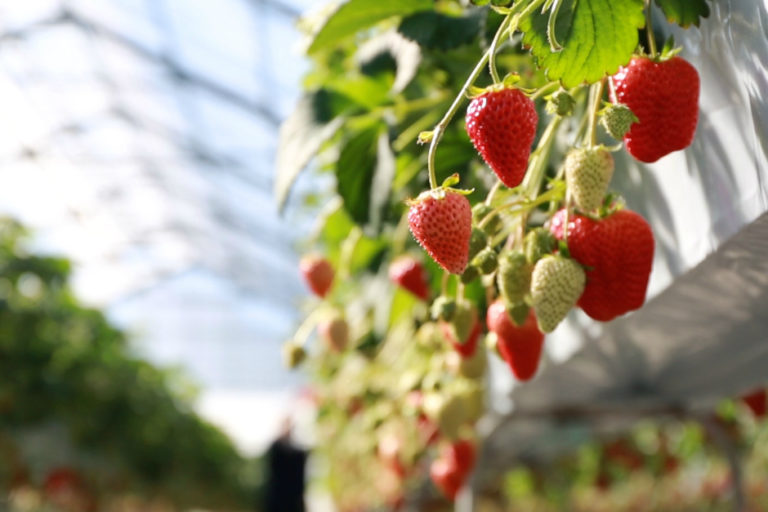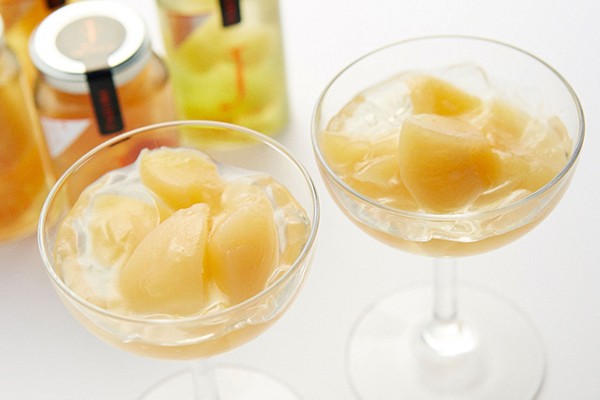Masterwork matcha tea, crafted skillfully by the most skilled of tea masters
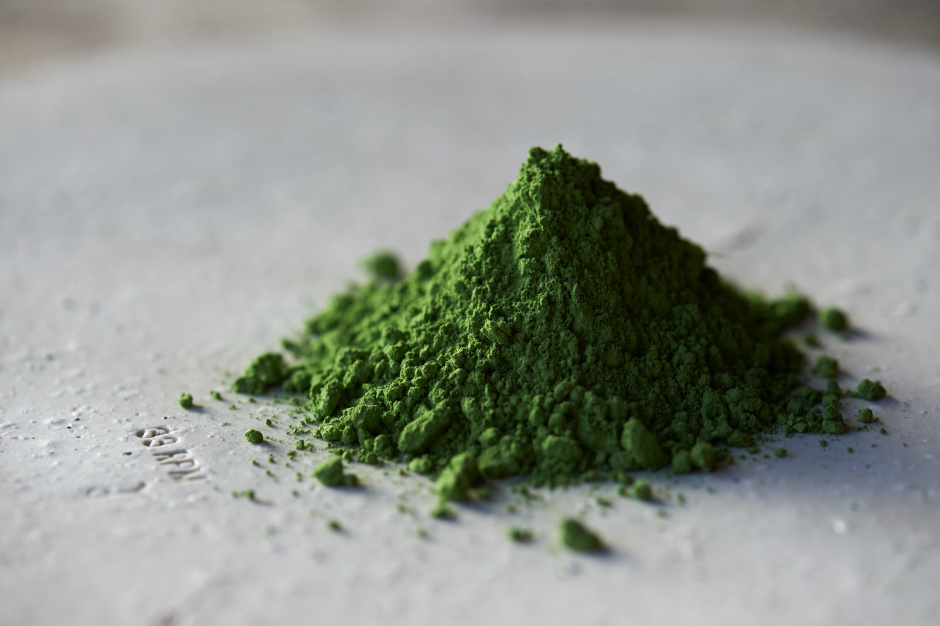
Nowadays matcha tea is used also as an ingredient for sweets, and its taste attracts not only Japanese people but many others around the world.This time we visited a master tea craftsman who is driven by a passion to deliver the charms of matcha tea from one of the largest tea production areas in many more forms than before.
The ideal matcha tea crafted by a master artisan of the highest rank
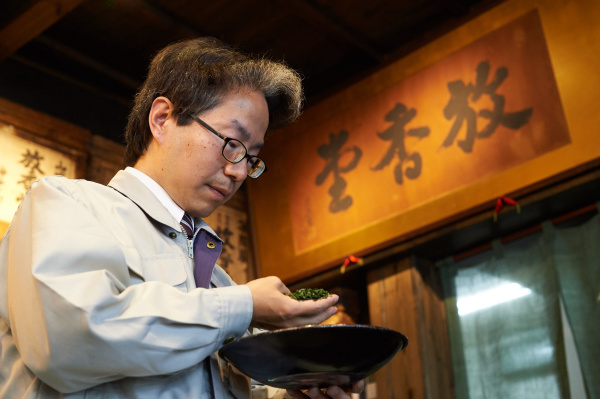
In Japanese, the word chashi means an artisan who makes tea. Chashi analyze and select tea leaves and blend them while bringing out each variety’s character to create the taste that they seek. Chashi are ranked depending on their skill as connoisseurs of tea, and as of 2015, only 13 chashi have been granted rank 10, the highest honor. Yasuyuki Suda, aka Genbei Higashi, is a rank-10 tea master and the 6th generation chashi of Hokodo, an esteemed Uji tea retailer of Kyoto with a history more than 180 years long.Yasuyuki not only selects and blends tea, but also visits the company’s tea farm daily to build the taste of tea from scratch and to collaborate with the farmers to explore the best methods for growing the finest tea.
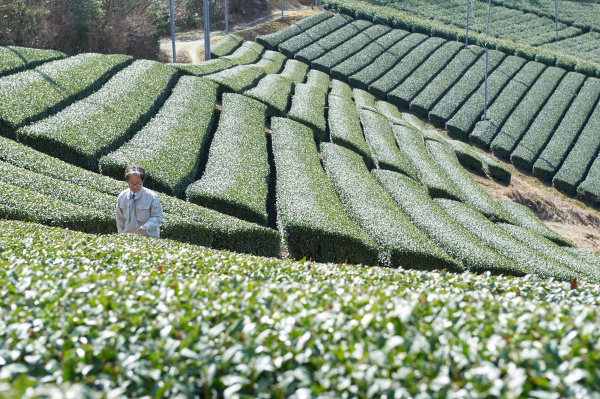
“I think this farm is everything. Unless I am involved from the farming stage, I will never be able to create the kind of matcha tea I am dreaming of. We have our own tea farm and manage other tea farms as well, so we blend and assess tea, as well as farming it. This is the essence of tea making I think.”
Even if two farms are in the same area, they will produce tea with different characteristics, depending on variety, climate and soil quality. Yasuyuki says cultivating tea is “much like developing a person.”
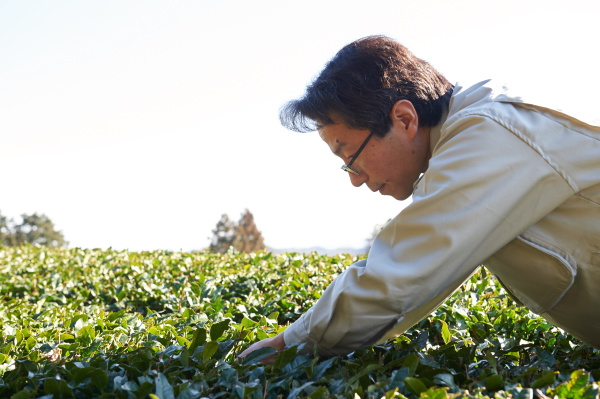
“When you visit the farm every day, you begin to understand how each tree is feeling. For example, if the tea is not looking well, you put some grass on its roots, like a blanket. You do the same with fertilizer. People cannot eat steak when they are not well. Likewise, you give a tree fertilizer when it wants it. This is something our predecessors taught us, and also something we learn by experience. Some farms are cheerful, happy and do not need much care, and some farms get grouchy when they are neglected. There is a wide variety of characteristics. I never get bored of looking at tea farms, even if I go every day.”
Tea leaves, grown with so much care, are in their prime for only two to three days, sometimes even for only a day. Yasuyuki never leaves the farm from the end of April to the end of May, around the time the tea is harvested, to pick the tea leaves without missing the best moment. Yasuyuki is also thorough and never takes stimulating substances like chili peppers and wasabi, let alone alcohol or cigarettes, to protect his delicate sense of taste and smell as a chashi. Every behavior and word from Yasuyuki shows his deep love for tea.
Daily scenes with tea to be passed on future generations
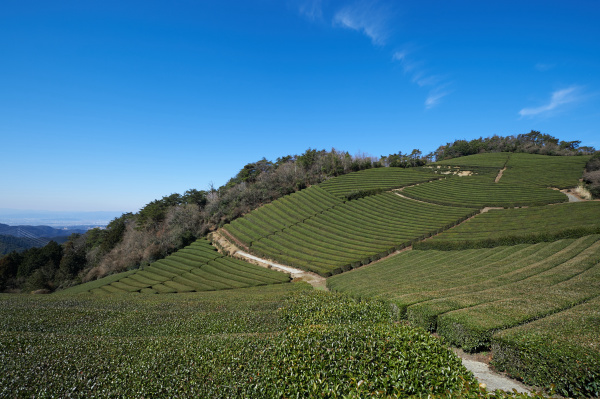
Tea grows on tea trees, and the soil of the mountainous southern region of Kyoto Prefecture is suitable for its growth. Its climate with large temperature fluctuations and ample water from the Kizu River are also the reasons tea has been farmed in this region since ancient times. The landscape of tea farms that sprawl on the mountains like waves are majestic and very beautiful.
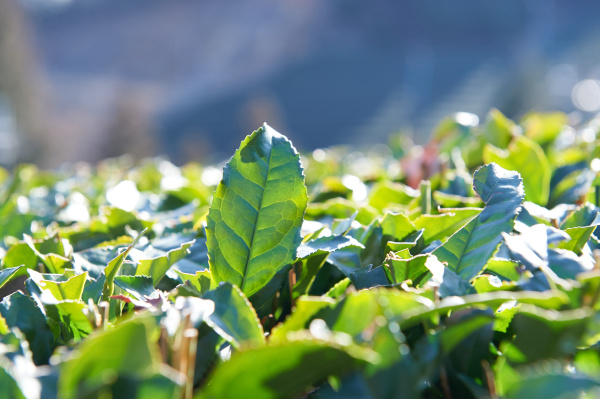
Tencha tea, the ingredient of matcha tea, is grown in a tea farm covered in reeds and straws, to block sunlight. After harvest, it is immediately taken to a processing plant, steamed, heat-dried in a machine called a “tencha furnace,” and then its stems and veins are stripped. The tencha tea is then milled and becomes matcha tea.
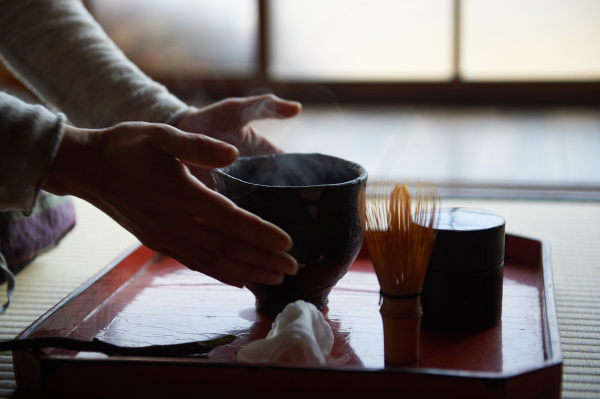
“There is a place I know who serves good tea,” said Yasuyuki and took us to the house of potter Yoshiyuki Shimizu, in Dosenbo, Minamiyamashiro Village. The 80-year-old traditional Japanese house has a Japanese room equipped with a traditional heated low Japanese table, and a sprawling tea farm outside its lattice window.
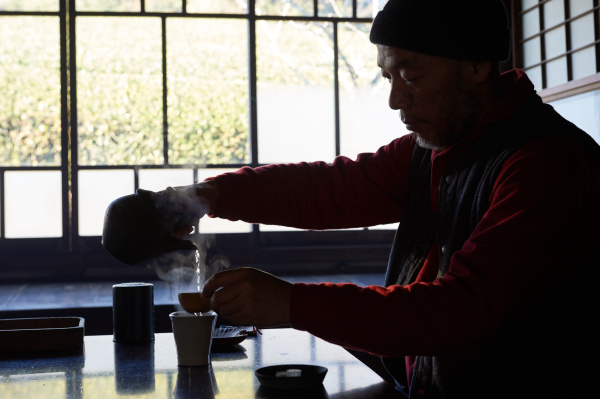
Yasuyuki had always wanted to preserve the tradition of serving tea in a teapot, and met Yoshiyuki after traveling around Japan looking for a potter who would craft his ideal teapots and cups. Yasuyuki was mesmerized by Yoshiyuki’s style of using the local soil for his earthenware, and by his charming products and personality.
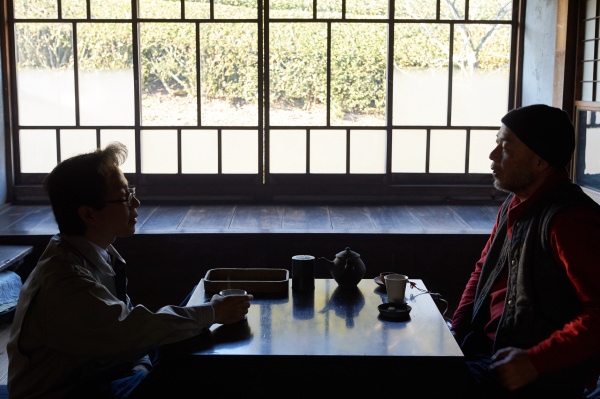
Enjoying the aromatic tea Yoshiyuki roasted, Yasuyuki talked about his dream as a chashi.“Whenever I come to Dosenbo I always come here.
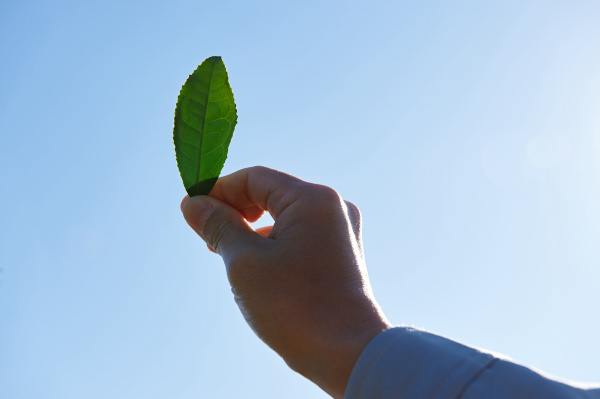
When you are in this kind of space, you want to brew tea in a teapot and chat. This chat is what epitomizes Japan’s tea culture, I think. More than the techniques of the chashi and so forth, I want to communicate this kind of scene to people.”
Uji matcha tea from the southern region of Kyoto Prefecture
Source:Yasuyuki Suda, Hokodo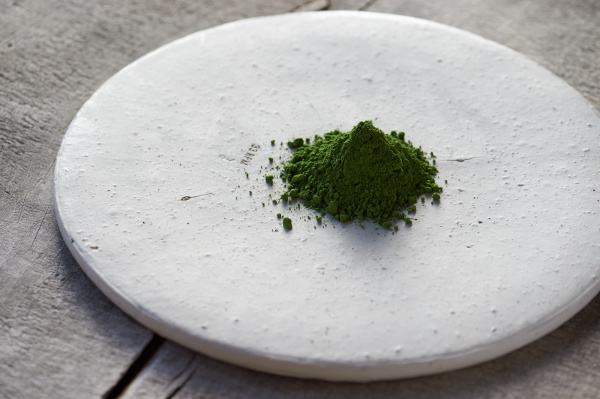
Peak Season
Matcha tea tastes better during the summer after the new tea season of early April to early May, after it has matured. In the world of tea, this maturing process is called “withering.”

